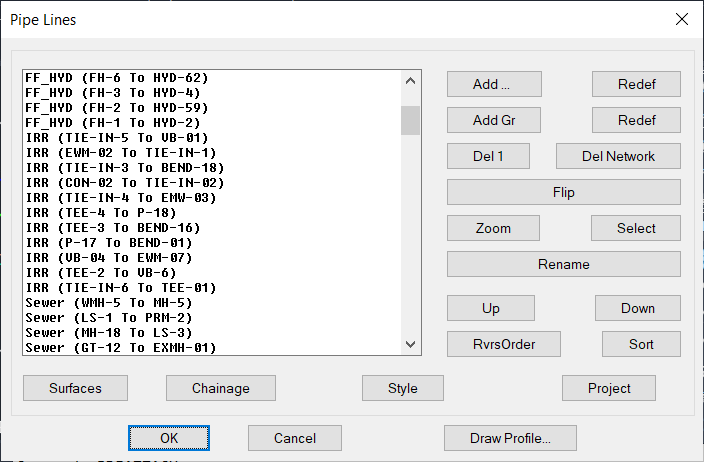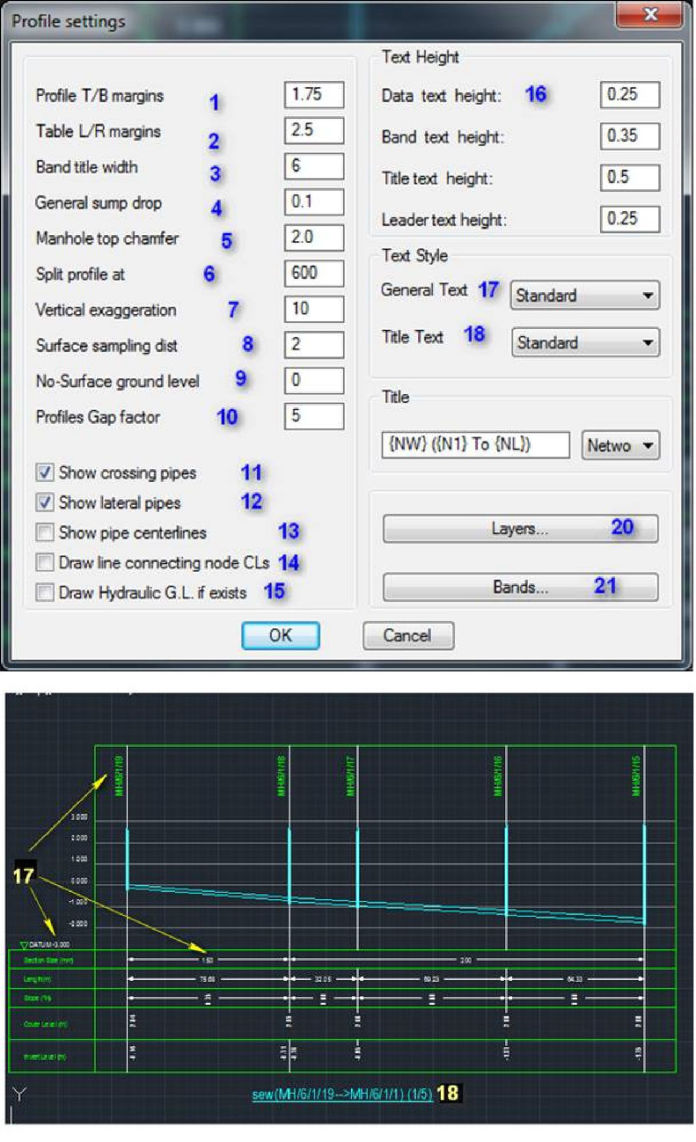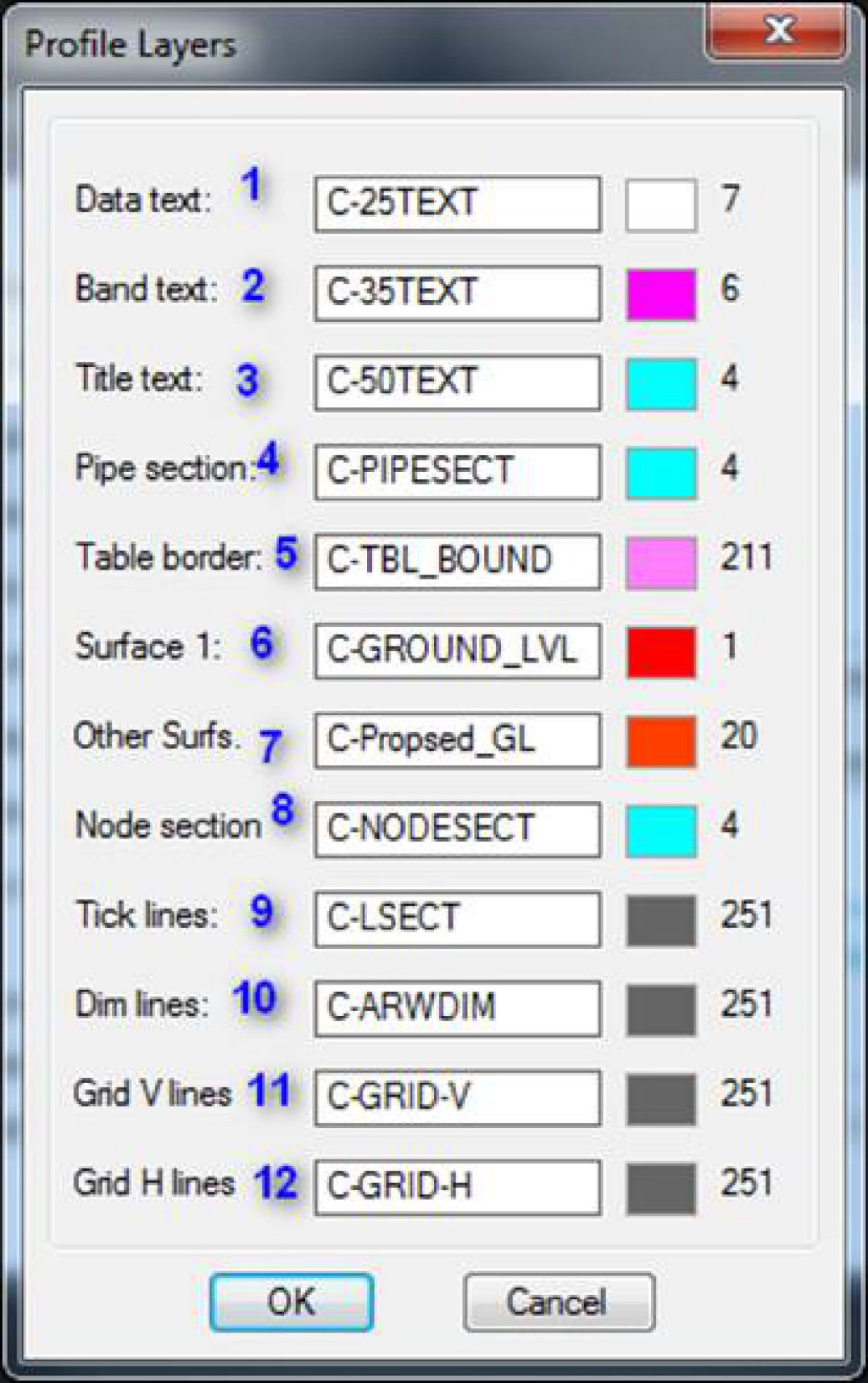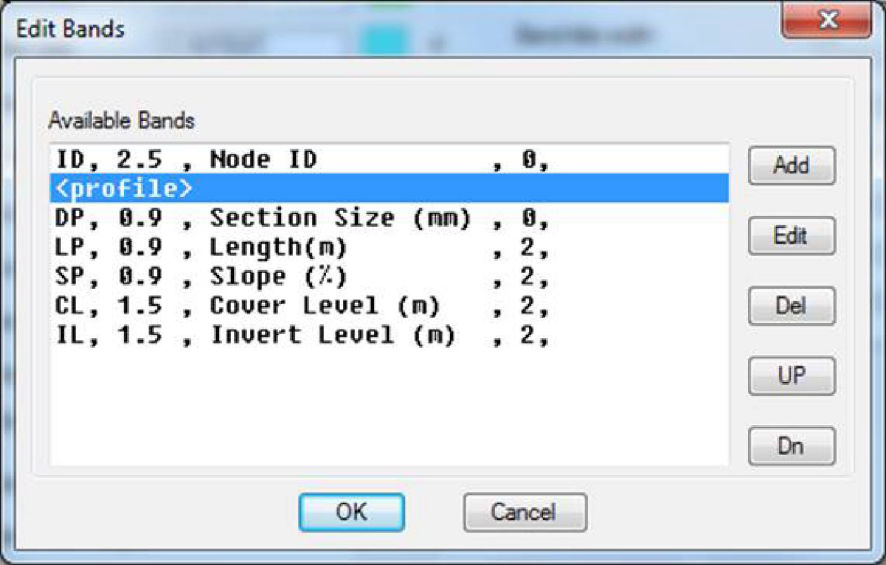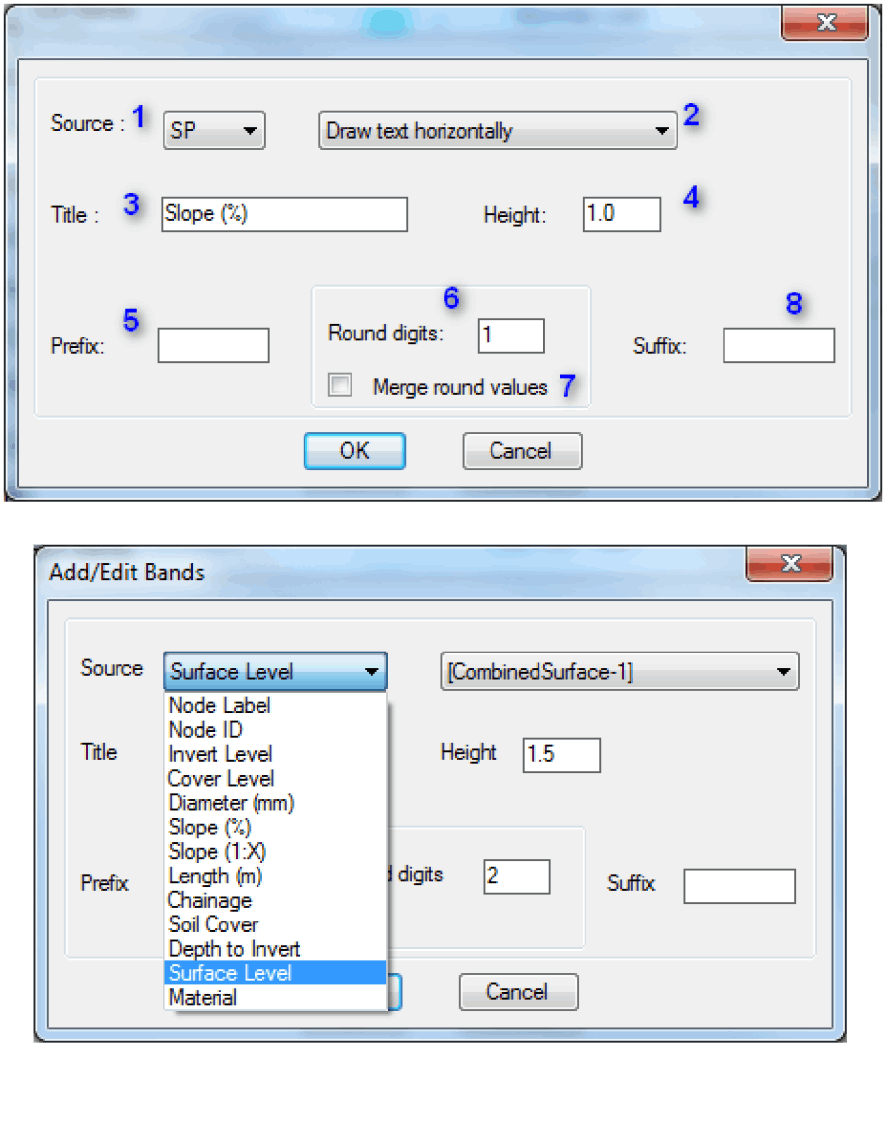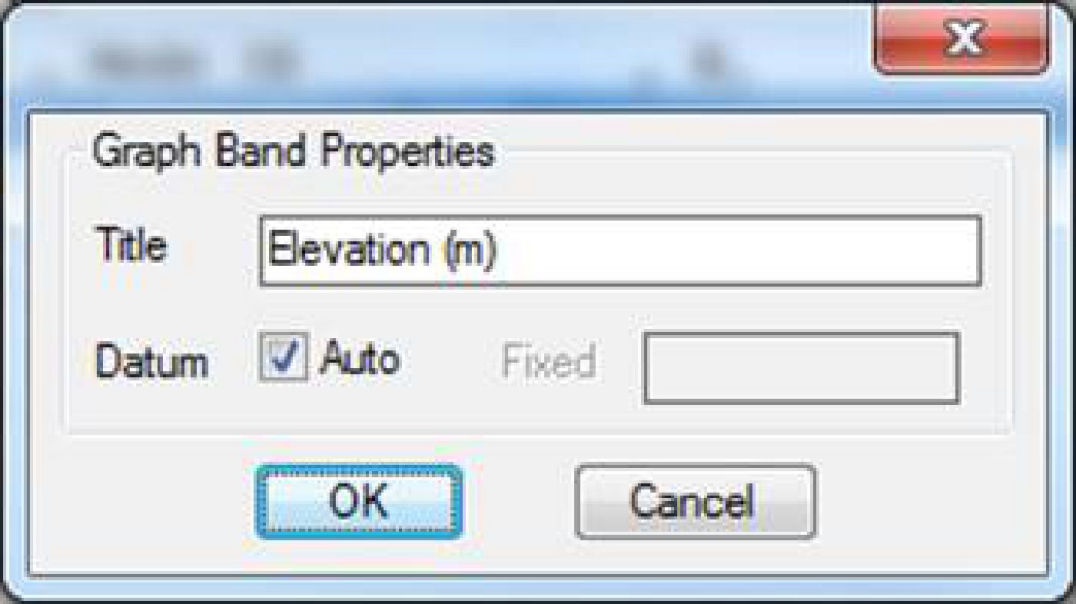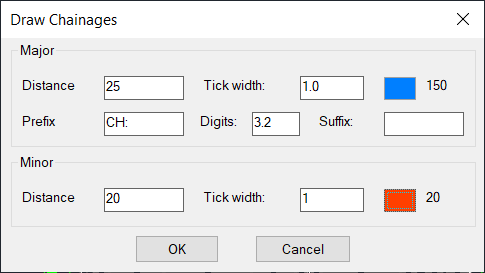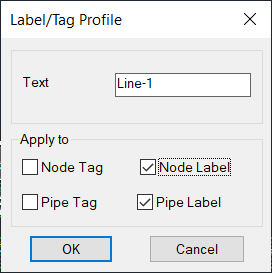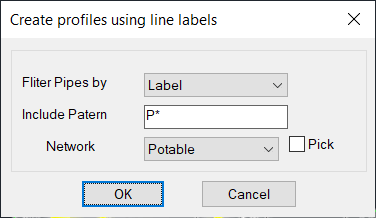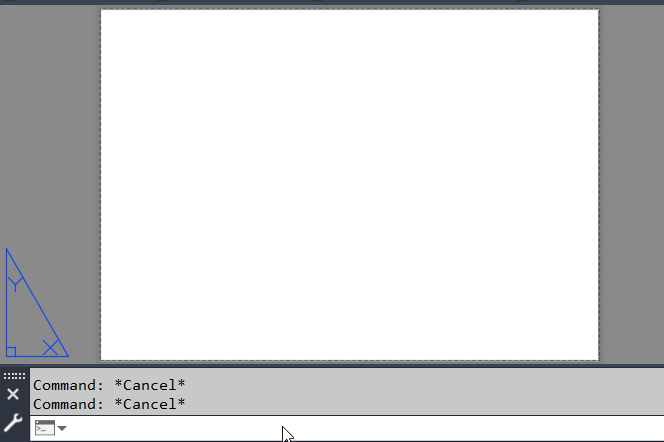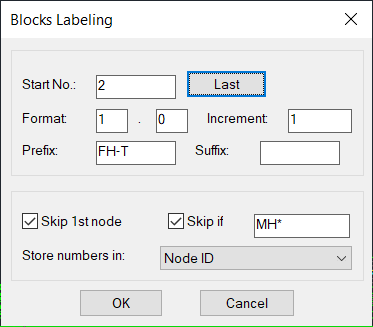Creating Profile
Drawing profiles can be done quickly by selecting the first, the last and the in-between nodes:
1- [Add] This button will prompt user to add profile line to the list, by picking the 1st, last and the in-between nodes.The default name will be the (
2- [Add Gr] This button to add a profile line for gravity networks by selecting the first and the last nodes only.
3- [Del1] This button to remove the highlighted profile from the list and delete it after pressing OK.
4- [Flip] This button is reverse the line; the line will start from the last node to the first node. The name of the line will be changed by reversing the arrow, but if the line was already renamed, no rename will occur.
5- [Zoom] This will zoom the screen view to the highlighted profile line in the layout.
6- [Select] This will zoom to and select the line pipes and
11- [Surfaces] This button will enable user to add/remove one or more surfaces to the highlighted line. The number next to the button indicates the number of surfaces to be shown on the highlighted profile. The top surface will be in one layer, the rest will be in another layer as specified in the profile settings dialogue.
9- [Chainage] This button will create Chainages to the line
10- [ Style ] To select the Profile Style, for the highlighted prof
11- [Draw Profile] This will draw the highlighted profile line, user will be prompted to specify the insertion point.
12- [ Project ] This button will prompt user to select a 3d Poly to be projected on the profile, information of this object can be added to the profile bands.
The profile will be one block even if it is split into several lines based on the profile settings.
